#Google Search Console
Explore tagged Tumblr posts
Text
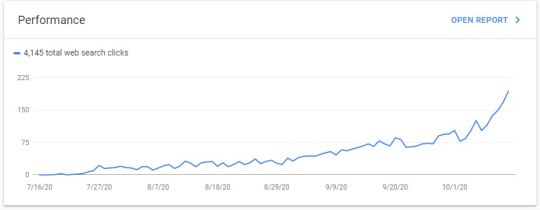
رشد سایت صفر در حوزه فروش طلا و جواهر طی ۳ ماه
با شروع از صفر، تیم دیجی ادز موفق شد در مدت تنها ۳ ماه یک وب سایت فروش طلا و جواهر را به سطحی از موفقیت برساند که جایگاه چشمگیری در نتایج جستجوی گوگل پیدا کند و نرخ کلیک بالایی را ثبت نماید.
تحلیل دادههای عملکرد سایت فروش طلا و جواهر
نمودار ارائه شده از ابزار Google Search Console، روند رشد کلیکهای جستجوی وب را برای این سایت نمایش میدهد. این ��ادهها نشاندهنده یک پیشرفت پایدار و چشمگیر در بازه ۳ ماهه است.
نکات کلیدی از دادهها:
تعداد کلیکها: سایت در مدت زمان ۳ ماه توانسته به ۴,۱۴۵ کلیک از نتایج جستجوی گوگل دست یابد. این نشاندهنده موفقیت در جلب توجه کاربران از طریق محتوای بهینه و حضور موثر در نتایج جستجو است.
رشد صعودی: در آغاز پروژه (اواسط جولای)، سایت کلیکهای بسیار کمی دریافت کرده است، اما با اجرای استراتژیهای دقیق سئو و تبلیغات، نمودار نشاندهنده یک رشد تدریجی در ماههای آگوست و سپتامبر و یک شتاب چشمگیر در ابتدای اکتبر است.
افزایش کلیک روزانه: تعداد کلیکهای روزانه از صفر به بیش از ۲۲۰ کلیک روزانه رسیده است، که رشدی قابل توجه و هدفمند محسوب میشود.
اقدامات موثر انجامشده توسط دیجی ادز:
سئو داخلی (On-Page SEO):
بهینهسازی محتوای صفحات سایت شامل توضیحات محصولات، کلمات کلیدی مرتبط و متا تگها.
بهبود ساختار URLها و تگهای عنوان.
سئو خارجی (Off-Page SEO):
اجرای استراتژیهای لینکسازی هدفمند با تمرکز بر سایتهای معتبر مرتبط با حوزه طلا و جواهر.
تولید محتوای جذاب: مقالات وبلاگی مرتبط با طلا و جواهر، راهنمای خرید، و آموزش نگهداری جواهرات، که باعث افزایش اعتماد کاربران و جذابیت محتوا شد.
تحلیل دادهها: تیم دیجی ادز با بررسی دادههای ابزارهایی مانند Google Analytics و Search Console، نقاط ضعف و قوت سایت را شناسایی و استراتژیها را بهینه کرده است.
بهبود تجربه کاربری (UX):
سرعت بارگذاری صفحات افزایش یافته است.
رابط کاربری زیباتر و کاربر پسندتر طراحی شده است.
دلایل رشد سریع در سه ماه:
کامل شدن فرآیندهای لینکسازی خارجی و کسب اعتبار دامنه.
افزایش تعداد صفحات ایندکسشده توسط گوگل.
تثبیت کلمات کلیدی هدف در جایگاه های برتر نتایج جستجو.
نتیجهگیری:
این پروژه نمونه ای از تاثیرگذاری خدمات دیجی ادز در رشد و توسعه کسب و کار های آنلاین است. با شروع از صفر، در مدت کوتاه ۳ ماه این سایت توانست به ترافیک قابل توجه و جایگاه مناسب در نتایج جستجو دست یابد.
اگر شما نیز به دنبال رشد سریع و هدفمند سایت خود هستید، همین حالا با دیجی ادز تماس بگیرید و از مشاوره رایگان و خدمات حرفه ای ما بهره مند شوید!
#فروش طلا و جواهر#رتبه یک گوگل#گوگل#دیجی ادز#دیجیتال مارکتینگ#سایت دیجی ادز#طراحی سایت#طراحی#تولید محتوای سایت#سئو سایت#خدمات سئو سایت#Google Search Console#خدمات دیجی ادز
6 notes
·
View notes
Text
🚀 Exciting News for SEO Enthusiasts! 🚀
Google just unveiled a game-changing feature in Search Console that will take your website optimization to the next level! Introducing the new "Recommendations" feature – your personalized guide to improving site performance and climbing the search rankings. 🔍 What’s New? Google’s latest tool provides tailored SEO suggestions directly on your Search Console overview page. Based on data from Google’s indexing, crawling, and serving systems, these insights will help you prioritize key optimization efforts like: - Implementing structured data - Adding sitemaps - Identifying trending queries and pages 📈 Why This Matters: 1. Simplified Optimization: Get a clear, actionable path to enhance your site’s performance. 2. Time-Saving: Focus your SEO efforts efficiently with specific, data-driven recommendations. 3. Google’s Preferences: Gain valuable insights into what Google values for search rankings. 4. Trend Identification: Stay ahead by recognizing trending queries and pages. 5. Learning Tool: Perfect for those new to SEO – understand the essentials of search optimization. 🔄 Rollout & Availability: - Currently in the experimental phase - Gradual rollout over the coming months - Recommendations are provided only when relevant to your site Remember, these are suggestions, not mandates. Evaluate them in the context of your unique strategy and goals. Stay ahead in the digital marketing game and keep an eye on this exciting development. Share your experiences and let’s learn together how this tool can shape our SEO strategies! Feel free to connect and follow for more updates on SEO and digital marketing trends!
📌Follow us on Social Media📌
📢 LinkedIn — Vedang Kadia — Amazon Associate | LinkedIn
📢 Quora — Vedang Kadia
📢 Tumblr — Untitled
📢 Medium — Vedang Kadia — Medium

#seo#digital marketing#tumbler#marketing strategy#seo services#search engine optimization#emailmarketing#artificial intelligence#google search console#website optimization#website development#tech news#marketing techniques#seo tips#india
4 notes
·
View notes
Text
#seo expert#seo marketing#seo services#social marketing#socila media#digital maketing#google#digital marketing#google search console#seo#seo specialist#socialmediamarketing
4 notes
·
View notes
Text
Blog da Faculdade Dom Alberto
Utilizando estratégias de SEO, desenvolvi textos com ótimo ranqueamento para o blog da Dom Alberto, uma instituição de ensino do Grupo Faveni.
O objetivo dos textos era aumentar a autoridade da instituição de ensino, apresentar e oferecer os cursos de pós-graduação à distância e aparecer entre os primeiros resultados de pesquisa.

Link para o texto

Link para o texto

Link para o texto

Link para o texto
Link para o blog.
6 notes
·
View notes
Text
Google Search Console vs Google Analytics: Understanding the Differences
Introduction:
In the area of Digital Marketing Services, two stalwarts stand as gatekeepers to the virtual global: Google Search Console (GSC) and Google Analytics (GA). While each gear are pivotal for understanding on-line overall performance, they cater to wonderful aspects of a website's lifestyles. In this article, we delve into the nuances of Google Search Console and Google Analytics, unraveling their differences and the unique insights they provide to digital marketers.
Google Search Console: Mapping Your Virtual Terrain
Overview and Purpose:
Google Search Console is a web provider with the aid of Google that allows webmasters to check the indexing reputation of their websites.
It ordinarily focuses on how Google's seek engine interacts with a website, supplying gear for webmasters to optimize their website's visibility in seek effects.
Key Features:
Search Performance Reports: GSC gives designated insights into how a internet site plays on Google Search, which includes clicks, impressions, click-on-through prices, and average positions.
Index Coverage: Webmasters can pick out and remedy issues associated with Google's indexing in their website, ensuring all essential pages are blanketed in the search consequences.
User-Friendly Interface:
GSC is designed with a person-pleasant interface, making it reachable for webmasters and digital marketers with varying ranges of technical expertise.
Google Analytics: Illuminating the User Journey
Overview and Purpose:
Google Analytics is a complete internet analytics service that gives in-depth records and analytics for internet site site visitors.
It specializes in consumer behavior, offering insights into how traffic engage with a website, the sources of site visitors, and the effectiveness of advertising efforts.
Key Features:
Audience Reports: GA gives demographic statistics, pastimes, and conduct reviews, supporting entrepreneurs recognize their target market.
Acquisition Reports: Marketers can analyze the assets of site visitors, whether or not it is from natural seek, paid advertising, social media, or other channels.
Conversion Tracking:
One of the pivotal capabilities of GA is conversion tracking, allowing marketers to measure the fulfillment of unique goals, together with purchases, signal-ups, or other desired moves.
Understanding the Synergy:
Complementary Roles:
GSC and GA supplement each different through presenting distinctive perspectives on a internet site's overall performance. While GSC focuses on search engine interactions, GA illuminates person conduct and the achievement of marketing strategies.
Integrated Insights:
Integrating GSC and GA allows digital entrepreneurs to harness a holistic knowledge of their on-line presence, from seek visibility to user engagement.
Conclusion:
As the virtual advertising panorama evolves, leveraging the electricity of both Google Search Console and Google Analytics will become imperative. These gear, with their distinct focuses, empower entrepreneurs to optimize their web sites for serps, understand user conduct, and refine their techniques for a seamlessly included online presence. In the ever-increasing virtual realm, mastery of both GSC and GA is the important thing to navigating the digital panorama with finesse and insight.
3 notes
·
View notes
Text
What is SEO ................?
Hi Guys! I am Masiur Rahman before you. I am professional Digital Marketer and SEO Expert. I will manage any kind of social media ( Facebook, Twitter, Instagram, Tumblr, Linkedin, Reddit, Pinterest etc. ). I will create Twitter & Facebook Ads Campaign & Boosting. Also I will do SEO ( Search Engine Optimization ). like: On-page SEO, Of-page SEO, Technical SEO, Keyword Research, Competitor Analysis, Google Search Console, Google Analytics.
#seo tools#social marketing#seo expert#smm services#social media marketing#keyword research#online marketing#seo optimization#backlinks#emailmarketing#youtube marketing#seo marketing#seo#seo services#seo agency#local seo#google ads#google search console#google search results#google search api#search engine#marketing#copywriting#networking
3 notes
·
View notes
Text
#duplicate content checker#seo#search engine optimization#on page seo#ahrefs#semrush#seo tools#search console#google search console#digital marketing#seo marketing#search engine rankings#seo optimizer
3 notes
·
View notes
Text
WHAT TO EXPECT FROM GOOGLE SEARCH CONSOLE UPDATES IN 2024
Our latest blog post explores the exciting enhancements that promise to reshape digital marketing strategies. From improved data visualization to advanced analytics, stay ahead of the curve and optimize your website's performance effectively. Learn how these updates will empower you to make informed decisions, enhance your online visibility, and achieve higher search rankings. Embrace the evolving landscape of SEO by delving into the insights offered in this comprehensive guide... Read more

4 notes
·
View notes
Text
I will do onpage SEO and technical optimization for website ranking
Hey Dear,
Are you eager to see your website achieve a top ranking in Google search engine results?
Don't worry, I specialize in enhancing your website's performance and ranking on Google through effective On-page SEO and Technical SEO techniques.
I will be utilizing WordPress plug-ins such as Yoast and Rank Math with my experience, and I will implement comprehensive On-page SE0 optimization in accordance with search engine policies.
On-page SEO Optimization Included:
SEO Title
SE0 Meta Description
Keyword Optimization
URL/Permalink Optimization
Heading Tags (H1, H2, H3, etc,) Setup
Keyword Density Check
Image optimization And Alt Tag
Internal/External Linking
Add Related Keypharse
Premium Yoast/Rank Math Plugging Setup
SE0 Audit Report
Technical SE0 Optimization Included:
Google Search Console
Website Speed
XML Sitemap
Robots.txt File
Canonical Tag
404 Error Pages
301 Redricting
Schema Markup
Benefits Of Choosing Me?
Ethical SE0 Practices
After-Purchase Service and Support
Ensuring 100% Client Satisfaction
Note: Kindly contact me before making the purchase to discuss your specific requirements.
Cheers, MD Rana
Thanks
#onpage seo#seo#digitalmarketing#technical seo#website ranking#post ranking#product seo#sitemap#google search console
6 notes
·
View notes
Text
How to Add Google Search Console in WordPress For every website owner, it is important to be found on the internet. Thus, it is very important to submit your website to Google Search Console.
#digitalmarketing#itvanilla#webdevelopment#seo#smm#advertising#graphicsdesign#socialmedia#google search console#indexing#sitemap setup#indexing issue
2 notes
·
View notes
Text
How to Use Google Search Console to Improve Your SEO
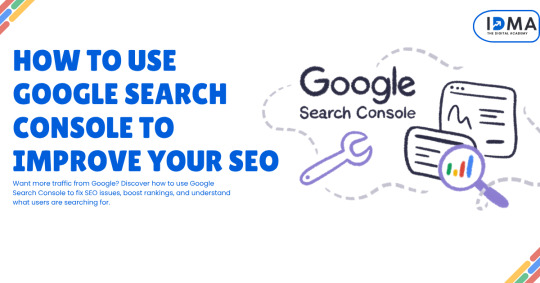
Google Search Console is a free service that helps website owners monitor and manage their site’s performance in Google Search. It provides insights into how your site is seen by Google. Some of the main features include:
Performance Data: Find out how many clicks and impressions your pages receive.
Indexing Information: See which of your pages are indexed by Google and identify any issues.
Search Queries: Discover what people are searching for to find your site.
Technical Alerts: Get notified about security problems, crawling errors, or other issues.
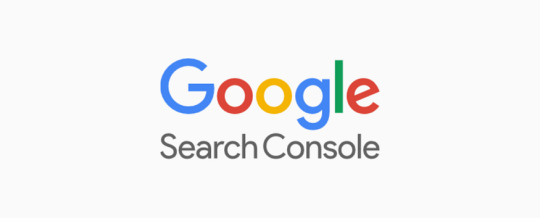
By using GSC, you can understand where your website is succeeding and where it might need improvement. This information is valuable for anyone trying to improve their website’s search engine optimization (SEO).
Setting Up Google Search Console
Before you can use the power of Google Search Console, you first need to set it up correctly. Here’s a step-by-step guide to get started:
Sign In to Google Search Console: Visit Google Search Console and sign in using your Google account. If you don’t have one, you’ll need to create one.
Add Your Website as a Property: Once logged in, click on the “Add Property” button. You will be asked to enter your website’s URL. It’s important to enter the exact URL that people use to reach your website (for example, including “https://” if that is used).
Verify Your Ownership: Google needs to know that you are the rightful owner of the website. There are several ways to do this:
HTML File Upload: Download a file from Google and upload it to your website.
HTML Tag: Add a special meta tag to the homepage of your website.
Google Analytics: If you already use Google Analytics and have administrative access, you can verify using your Analytics account.
DNS Record: Add a DNS record through your domain provider.
Pick the method that is easiest for you and follow the instructions provided by Google.
Submit Your Sitemap: A sitemap is like a roadmap of your website. It tells Google which pages exist on your site. After verifying your ownership, submit your sitemap (usually named sitemap.xml) to help Google crawl your site more efficiently.
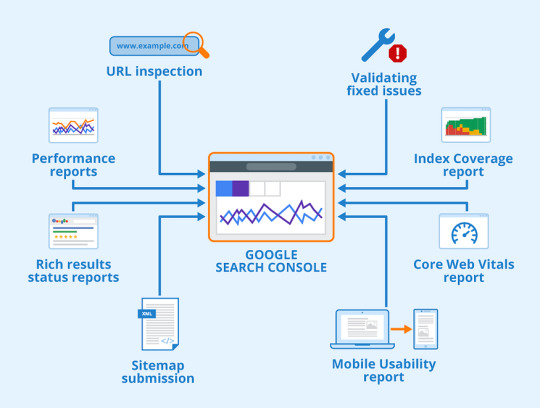
Taking these steps will set you up with Google Search Console so that you can start receiving useful data about your website. The process is quick and can be completed in about 15–20 minutes for a small website.
Why Setting Up GSC Is Important
Many website owners struggle with low traffic and poor search rankings. By setting up GSC, you can start to understand why your website might not be performing as well as it could. It alerts you to issues that might be keeping your pages from ranking and shows you areas where you can improve. In short, GSC is a guide to help your website become more visible on Google.
Understanding the Google Search Console Dashboard
Once you’ve set up Google Search Console, the next step is to familiarize yourself with the dashboard. The dashboard is the control panel where all the data and reports are available.
Overview of the Dashboard
When you log in to GSC, you will see several key sections:
Performance: This section shows data on clicks, impressions, click-through rates (CTR), and the average position of your website in search results.
Coverage: This section displays how many pages have been indexed by Google and highlights any errors, such as pages that could not be crawled.
Experience: Here, you can see information about how users interact with your site. This can include mobile usability and other user experience factors.
Enhancements: This report is particularly useful if you use structured data (information that helps Google understand the content of your pages better). It shows errors or suggestions related to rich results like recipes, articles, or product information.

Navigation and Key Reports
Performance Report: The performance report is where most website owners will spend a lot of time. It gives you a detailed view of how well your website is doing in Google search. You can see which pages are getting the most clicks, which keywords bring in traffic, and the overall trends in your site’s performance over time.
Coverage Report: The coverage report is critical for technical SEO. It shows you which pages Google has successfully indexed and which pages have errors. Errors might include pages that are not found (404 errors) or pages that encounter server errors (5xx errors). Regularly reviewing this report ensures that all important pages on your site are accessible to Google.
Mobile Usability Report: In the mobile-first era, this report helps you ensure your website works well on mobile devices. It identifies any issues that mobile users might face, like text that is too small or clickable elements that are too close together.
Enhancements and Rich Results: These reports show you if you have any issues with structured data. Structured data can help your site appear with rich results (like star ratings or additional information) in search results, which can improve your click-through rate.
Understanding these reports is key to effectively using Google Search Console. The more time you spend exploring the dashboard, the more familiar you will become with the nuances of your site’s performance.
Also Read: Is Digital Marketing the Right Career for You?
Monitoring Your Website’s Performance
The main purpose of Google Search Console is to help you monitor your website’s performance in Google Search. In this chapter, we will break down the most important parts of the performance data and explain how to use them to improve your SEO.
The Performance Report in Detail
The performance report shows several useful metrics:
Total Clicks: This number shows how many times users clicked on your site’s link in the search results. A higher number means more visitors found your site interesting.
Total Impressions: Impressions count how many times your site appears in search results. Even if users don’t click, high impressions show that your pages are visible to many people.
Average Click-Through Rate (CTR): The CTR is the percentage of impressions that turn into clicks. If your CTR is low, it may be an indication that your title tags and meta descriptions need improvement to entice users to click.
Average Position: This metric shows your site’s average ranking for the searched keywords. A lower number (closer to 1) is better, as it means your pages are ranking higher in search results.
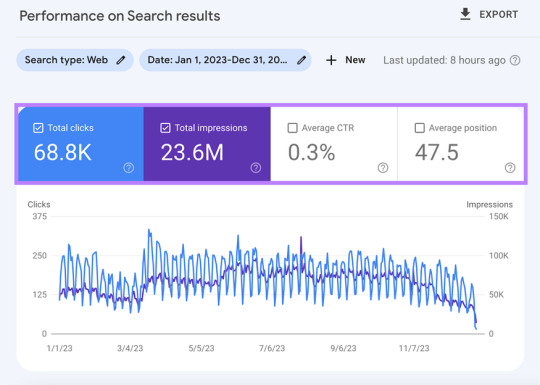
Analyzing Search Queries
Under the performance report, you can see what keywords people are using to find your site. This can reveal surprises about what your audience is interested in. For example, you might discover that a post you wrote months ago is suddenly popular. Understanding these search queries can help you tailor your content to better meet user needs.
Filtering and Comparing Data
Google Search Console allows you to filter data by country, device type, and date range. This feature is useful to determine trends over time. For instance:
Country Filter: Learn if most of your traffic comes from a particular country.
Device Filter: See if users access your site mostly from desktops, tablets, or smartphones.
Date Range Comparison: Compare your performance metrics week by week or month by month to see if your changes are working.
Using the Data to Improve SEO
Once you have an understanding of your performance data, you can use it to make improvements. Here are some practical steps:
Optimize High-Impression Keywords: If you see keywords with lots of impressions but few clicks, consider updating your title tags and meta descriptions.
Focus on Well-Performing Pages: Identify the pages that are already receiving clicks and try to improve their ranking by adding internal links and updating the content.
Identify Low-Performing Content: Look at pages with very low CTRs or poor average positions. Analyze what might be wrong (such as outdated content or poor title tags) and work on improving them.
By regularly checking the performance report, you stay on top of how your website is doing and can make data-driven decisions to boost your rankings.
Enhancing Your Site’s Index Coverage
Index coverage is a vital part of SEO. It is not enough for Google to know your website exists; Google needs to be able to crawl and index your pages correctly. In this chapter, we cover the Coverage report in Google Search Console and how to address common issues.
To know more about Google Search Console Read our Article
0 notes
Text
From 0 to 247 clicks.
From silence to visibility.
A few months ago, I started working on a solar energy website with almost no traffic. The challenge? Competing in a niche where everyone wants the top spot.
Instead of focusing on shortcuts, I chose:
Strong keyword research
Content tweaks that actually help users
On-page SEO that aligns with how people search
And slowly, things began to change. Impressions grew. Clicks followed. We reached 7,250+ impressions and 247 real clicks — all organic.
If you’ve ever worked in SEO, you know how satisfying this kind of growth feels!
It’s a small step, but it taught me a lot:
Consistency beats complexity.

0 notes
Text
How Can You Use Google Search Console to Fix Indexing Issues?

Google Search Console (GSC) is a powerful free tool that helps website owners monitor and troubleshoot their site’s presence in Google Search results. One of its most valuable features is the ability to identify and fix indexing issues. If your pages are not showing up in search results, GSC can guide you to the root of the problem and help get your content back on track.
In this article, we’ll explore the best practices for using Google Search Console effectively to fix indexing issues and improve your site’s visibility.
1. Understand How Google Indexing Works
Before diving into fixes, it’s important to understand the basics. Indexing is the process through which Google crawls web pages and stores them in its database. Only indexed pages are eligible to appear in search results.
Common reasons pages may not be indexed include:
Crawl errors
Duplicate content
Noindex directives
Poor internal linking
Blocked by robots.txt
GSC helps identify these issues so you can take corrective action.
2. Start with the “Index Coverage” Report
The “Index Coverage” report in GSC gives a detailed overview of how your pages are indexed. It categorizes URLs into:
Valid — Pages indexed and working fine
Error — Pages with critical issues preventing indexing
Valid with warnings — Pages indexed but with potential issues
Excluded — Pages intentionally or unintentionally not indexed
Action Tip: Regularly check this report to spot errors like “Submitted URL not found (404)”, “Crawl anomaly”, or “Duplicate, submitted URL not selected as canonical”.
3. Inspect Individual URLs
The URL Inspection Tool allows you to check the status of any page on your website.
To use it:
Paste the URL in the inspection bar
GSC will show if the page is indexed, how it was crawled, and if there are any issues
If not indexed, you’ll get reasons like:
Discovered — currently not indexed
Crawled — currently not indexed
Blocked by robots.txt
Marked ‘noindex’
Action Tip: For pages that should be indexed, click “Request Indexing” after fixing the issues. This tells Google to re-crawl and potentially index your page faster.
4. Check Your Robots.txt and Meta Tags
Sometimes indexing issues stem from a misconfigured robots.txt file or meta tags.
Things to check:
Your robots.txt file doesn’t block important pages or directories
Important pages don’t have a <meta name="robots" content="noindex"> tag
Pages you want indexed are not blocked in sitemap or canonical settings
Action Tip: Use the “robots.txt Tester” in older versions of GSC or check the source code of your page to ensure there’s no noindex tag where it shouldn’t be.
5. Fix Crawl Errors Promptly
GSC flags crawl errors that may prevent your pages from being indexed.
Common errors include:
404 Not Found
403 Forbidden
500 Internal Server Errors
Redirect loops
Action Tip: Fix broken URLs, update internal links, and make sure your server responds correctly to crawl requests. Once fixed, validate the issue in GSC so Google can recheck it.
6. Submit an XML Sitemap
Your sitemap is a guide for search engines to understand your site structure and find new content.
Make sure your sitemap:
Is up to date
Contains only canonical URLs
Is submitted in the “Sitemaps” section of GSC
Action Tip: After submitting, monitor the status of your sitemap in GSC to ensure it’s processed without errors. Resubmit after major content updates.
7. Use Canonical Tags Correctly
Canonical tags tell Google which version of a page is the preferred one, especially helpful when you have duplicate or similar content.
Incorrect canonical tags can lead to unintended exclusion from indexing.
Action Tip: Make sure each page has the correct canonical URL. Avoid self-referencing canonicals on pages you don’t want indexed.
8. Strengthen Internal Linking
A well-structured internal linking strategy helps Google crawl your site more efficiently. If a page isn’t linked from anywhere, Google might not discover or prioritize it.
Action Tip: Add relevant internal links to orphan pages (pages with no incoming internal links), especially from high-authority pages on your site.
9. Check Mobile Usability
With mobile-first indexing, Google primarily uses the mobile version of content for indexing and ranking.
Action Tip: Use the “Mobile Usability” report in GSC to identify issues like small font sizes, clickable elements too close together, or content wider than the screen. Fix these to improve mobile accessibility and indexing potential.
10. Track Fixes with Validation Reports
When you fix an indexing issue, you can click “Validate Fix” in GSC. This triggers Google to re-crawl the affected pages and update their status.
Action Tip: Always monitor the validation progress. If it fails, investigate further and retry.
11. Monitor Performance After Fixes
Once your pages are indexed, head to the “Performance” section in GSC to track:
Clicks
Impressions
CTR (Click-Through Rate)
Average position
Action Tip: Look for upward trends in these metrics after your indexing fixes. This shows your efforts are improving your site’s visibility.
12. Stay Proactive with Alerts
GSC sends email alerts when it detects serious issues. Don’t ignore them. Being proactive can save you from long-term traffic loss.
Action Tip: Enable email notifications and regularly check your GSC dashboard. Schedule weekly reviews to stay ahead of potential indexing problems.
Final Thoughts
Resolving indexing issues might seem complex at first, but with the right tools like Google Search Console, it's much more manageable. From checking individual URLs to submitting sitemaps and addressing crawl errors, each step helps enhance your site’s presence on Google Search.
With regular and thoughtful use, Google Search Console becomes an essential tool in your SEO toolkit.
Need help managing your website’s indexing and SEO performance? The Webstep Digital Marketing Team is here to assist with expert-level support and guidance. Let us help you keep your site running at its best in the search engine world!
0 notes
Text

NovaTales Media - Google Search Console NovaTales Analytics and Business Insights services help organizations use data analysis to gain valuable insights about their business to make smart choices for long-term success. Our team has an extensive knowledge on various technologies to create a unique approach based on data to help customers.
1 note
·
View note
Video
youtube
Como usar as FERRAMENTAS do Google para IMPULSIONAR sua Loja Virtual
#youtube#google#google analytics#google search console#googletagmanager#googleanalytics#googlesearchconsole
0 notes